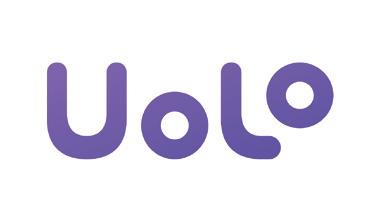




Name:
Class:
School:
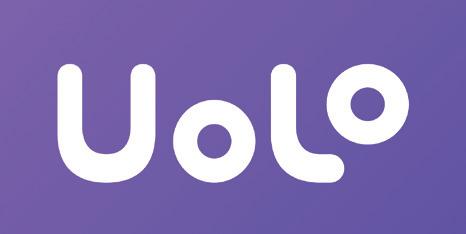
Academic Authors: Roma Jain, Monika Jain, Anuj Gupta
Creative Director: Bhavna Tripathi
Book Production: Naveen Gauniyal, Sanjay Kumar Goel
Project Lead: Pooja Gupta
VP, Learning: Abhishek Bhatnagar
All products and brand names used in this book are trademarks, registered trademarks or trade names of their respective owners.
© Uolo EdTech Private Limited
First impression 2025
This book is sold subject to the condition that it shall not by way of trade or otherwise, be lent, resold, hired out, or otherwise circulated without the publisher’s prior written consent in any form of binding or cover other than that in which it is published and without a similar condition including this condition being imposed on the subsequent purchaser and without limiting the rights under copyright reserved above, no part of this publication may be reproduced, stored in or introduced into a retrieval system, or transmitted in any form or by any means, electronic, mechanical, photocopying, recording or otherwise, without the prior written permission of both the copyright owner and the above-mentioned publisher of this book.
Book Title: Dawn Numeracy Workbook Level C
ISBN: 978-81-980546-9-2
Published by Uolo EdTech Private Limited
Corporate Office Address: 85, Sector 44, Gurugram, Haryana 122003
CIN: U74999DL2017PTC322986
Illustrations and images: www.shutterstock.com, www.stock.adobe.com and www.freepik.com
All suggested use of the internet should be under adult supervision.
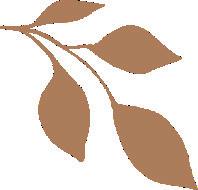
elcome to DAWN, our comprehensive series for Early Childhood Education that has been meticulously crafted to align with the guidelines of the Foundational Stage as outlined in the National Education Policy (NEP) 2020. This series is designed to provide a holistic learning experience, fostering the comprehensive development of young learners in accordance with the developmental milestones and learning outcomes specified in the National Curriculum Framework (NCF) 2022.
DAWN offers a rich blend of interactive and activity-based content to nurture each child's physical, emotional, intellectual, and spiritual growth. Our approach ensures that learning is enjoyable and meaningful, catering to every child's interests and abilities. By integrating various domains of development, we aim to create an environment where children can thrive, explore their unique potentials and cultivate a lifelong love for learning.
The curriculum is structured to promote Physical Development by incorporating activities that enhance motor skills, health, and overall physical well-being. Social and Emotional Learning (SEL) is a critical component focusing on building empathy, cooperation, and strong interpersonal relationships. Through engaging and thought-provoking activities, children develop Intellectual Capacities, fostering critical thinking, problem-solving, and a curious mind.
In line with the NCF 2022, DAWN also emphasises Spiritual and Moral Development, encouraging children to understand and embody values such as honesty, integrity, and respect for others. We aim to instill a sense of responsibility towards the environment, promoting sustainable practices from an early age.
Our curriculum is not just a series of lessons but a journey of discovery, growth, and joy. We believe that every child is unique, and our tailored approach ensures that each learner can engage with the content in a way that resonates with their individual needs and interests. By providing a nurturing and stimulating environment, DAWN sets the foundation for future success, preparing children not just for school, but for life.
The DAWN Level C Kit includes:

Free Additional Resources:
• Flash Cards
• Sticker Sheets
• Suggested Activities List, for teachers and parents
• Teacher's Manual
• Digital Learning Resources

Thank you for embarking on this educational journey with us. Together, we can make the dawn of early childhood education a bright and promising start for every child.





Look at the pictures. Write B for big and S for small.
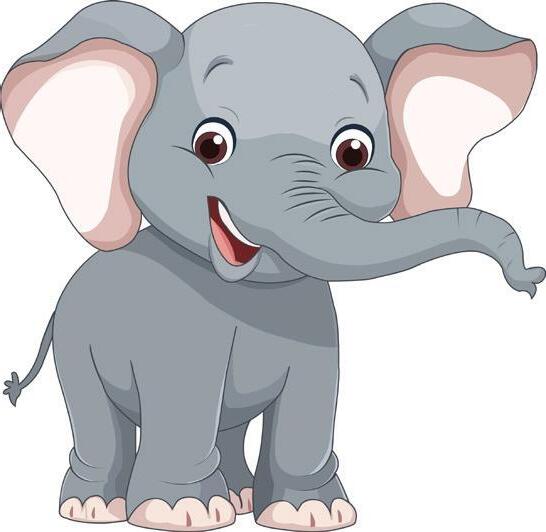
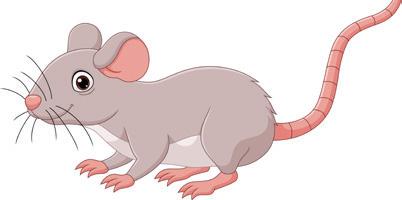
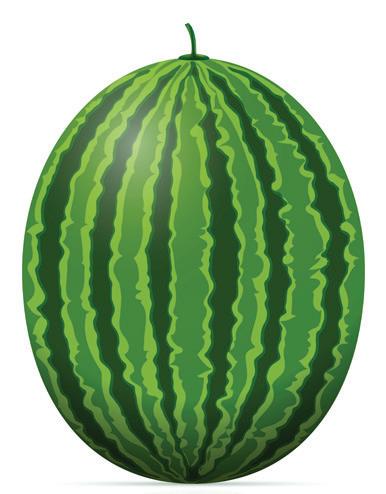
Draw a small thing next to the bear.
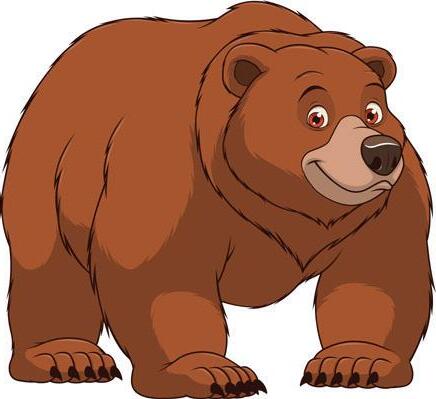

Objectives
• Size recognition and comparison
• Visual discrimination
• Fine motor skills

Circle the small animal.
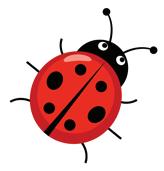
Tick (✓) the bigger animal.
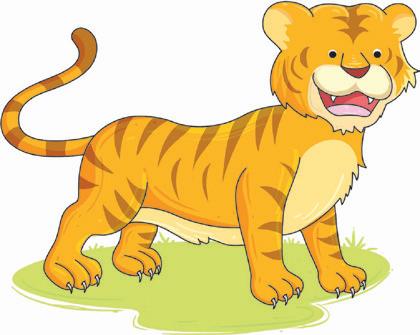
Tick (✓) the biggest animal.
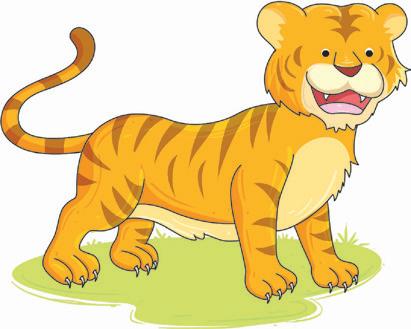
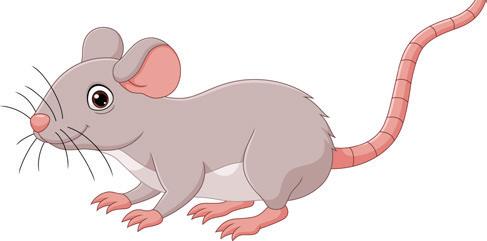


Objectives
• Size recognition and comparison
• Visual discrimination
• Understanding relative sizes • Fine motor skills


Circle the long thing.
Circle the short thing.
Draw a long pencil.
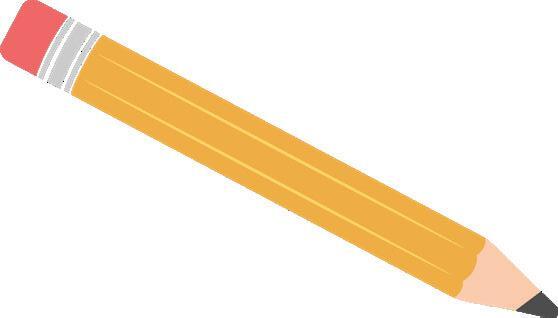

Objectives
• Length recognition and comparison
• Visual discrimination
• Fine motor skills

Circle the shorter thing. Circle the longer thing.
Tick (✓) the shortest thing.


Circle the longest thing.


Objectives
• Length recognition and comparison
• Visual discrimination
• Understanding relative sizes • Fine motor skills


Circle the light thing.

Circle the heavy thing.
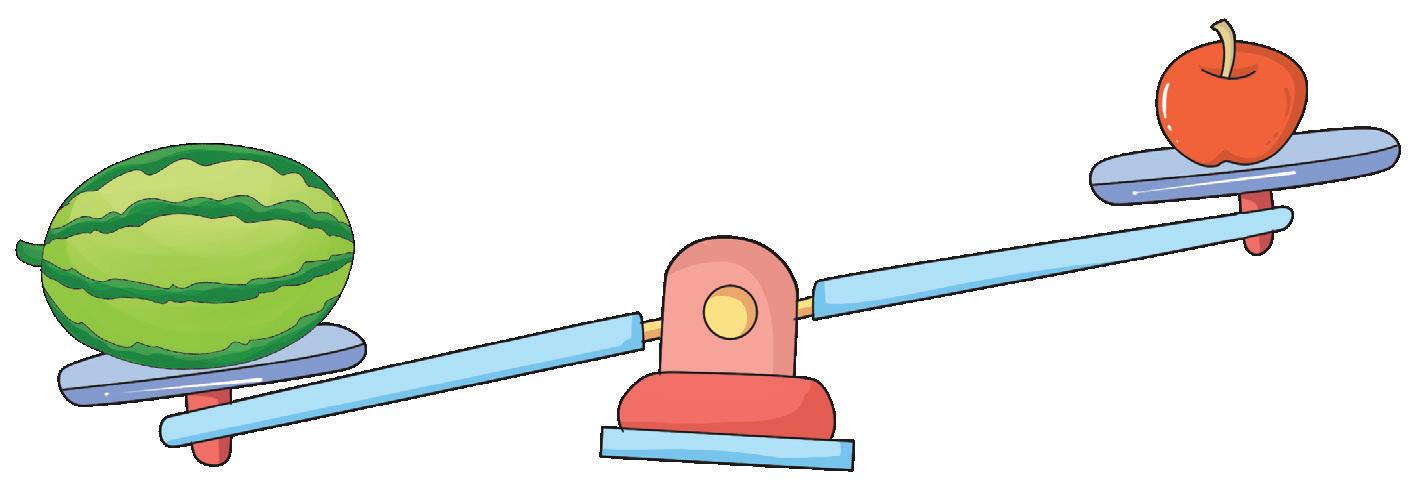
Write H for heavy and L for light.


Objectives
• Observation • Visual discrimination
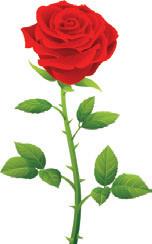
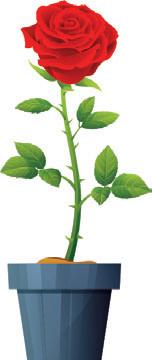
• Identify heavy and light objects

Circle the taller animal.
Circle the shorter child.
Tick (✓) the shortest plant.

















Tick (✓) the tallest one.


Objectives
• Height recognition and comparison
• Understanding relative sizes

• Visual discrimination
• Fine motor skills

Draw a ball that is different.
Draw a tree with a thick trunk.
Draw a narrow path.
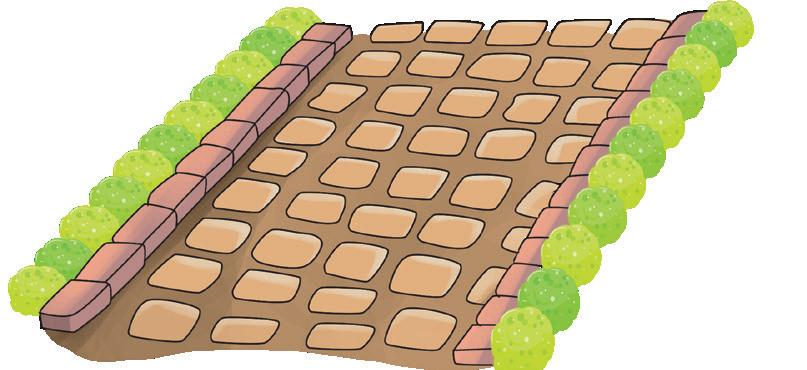

Objectives
• Visual discrimination
• Recognition of similarities and differences
• Observation and comparison
• Fine motor skills

Look at the plate and trace over the circle.
Tick (✓) the things that look like a circle.


Objectives
• Shape recognition
• Visual discrimination
• Sorting shapes • Fine motor skills


Look at the window and trace over the squares.
Tick (✓) the things that look like a square.

Objectives
• Shape recognition
• Visual discrimination
• Matching and sorting
• Fine motor skills

Look at the sailboat and trace over the triangle.
Tick (✓) the things that look like a triangle.

Objectives
• Shape recognition • Visual discrimination • Sorting shapes • Fine motor skills


Circle the thing that comes next to complete the pattern.


Objectives




















































• Shape recognition • Pattern recognition • Fine motor skills
• Attention to detail


























Look at the painting and trace over the rectangle.
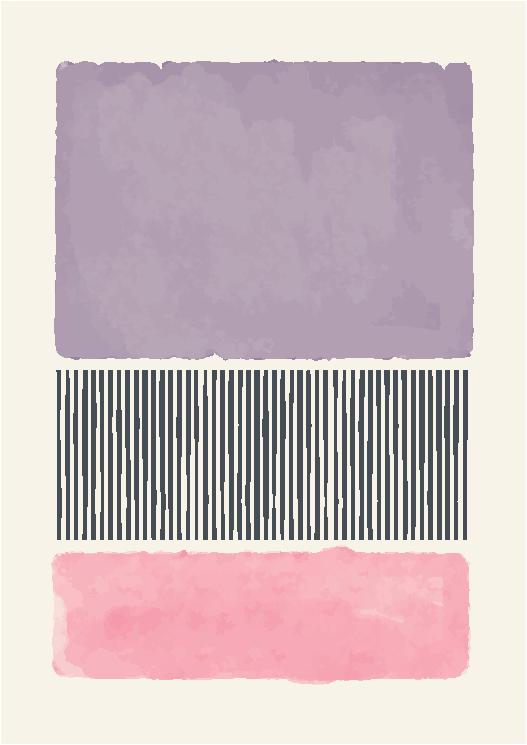
Circle the things that look like a rectangle.

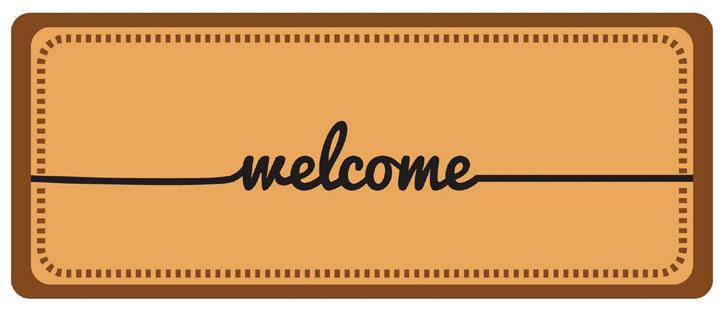

Objectives
• Shape recognition • Visual discrimination
• Sorting shapes • Fine motor skills




Objectives
• Shape recognition
• Visual discrimination
• Creativity • Fine motor skills

Look at the mirror and trace over the oval.
Tick (✓) the things that look like an oval.


Objectives
• Shape recognition

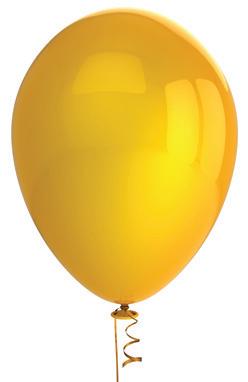

• Visual discrimination • Sorting shapes • Fine motor skills

Trace over the diamond, semicircle, and star.
Match the things that have the same shape.
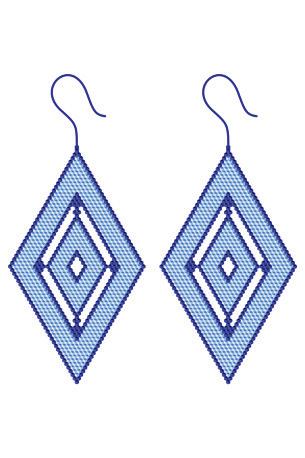
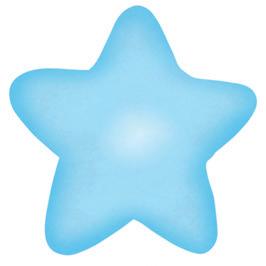
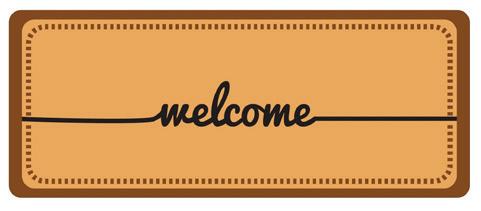

Objectives
• Shape recognition
• Visual discrimination
• Matching and sorting
• Fine motor skills

Draw the missing shapes to complete the patterns.


Objectives
• Shape recognition
• Pattern recognition
• Fine motor skills
• Attention to detail

Circle the thing that comes next to complete the pattern.
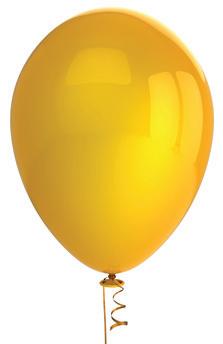

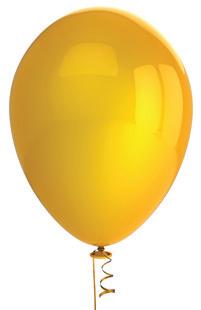
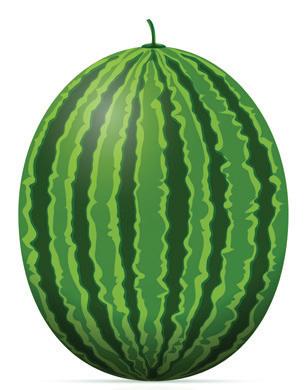

Objectives



• Shape recognition • Pattern recognition • Fine motor skills
• Attention to detail

Draw the missing shapes to complete the patterns.

Objectives
• Shape recognition
• Visual discrimination
• Making patterns
• Fine motor skills


2 tens are .
5 tens are .
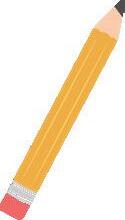





































































7 tens are .
10 tens are .

Objectives
• Early arithmetic skills
• Counting by tens
• Grouping skills
• Number recognition
• Writing numbers

Count forward and write the missing numbers. Objectives







Count the number of things and write the total.
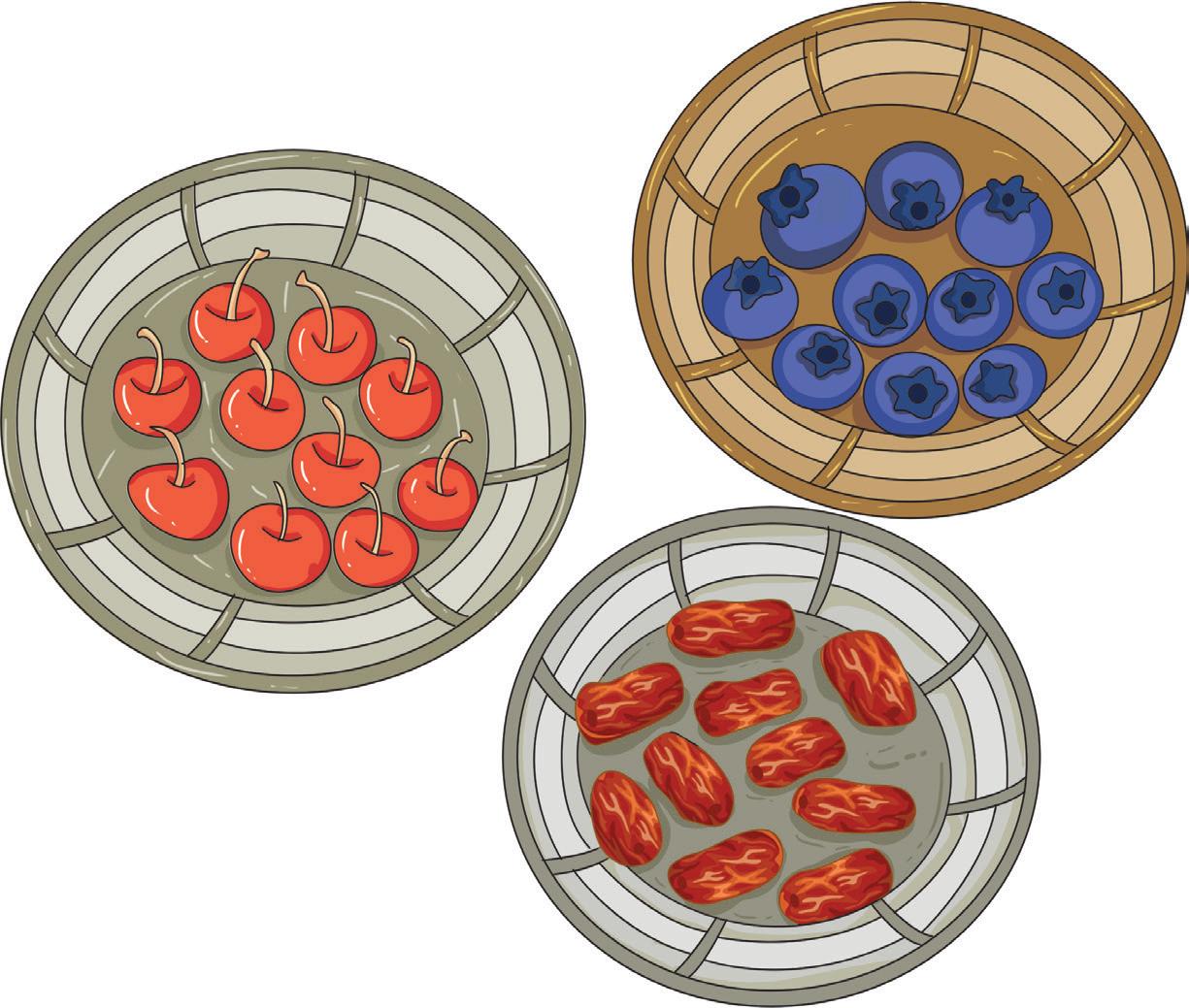
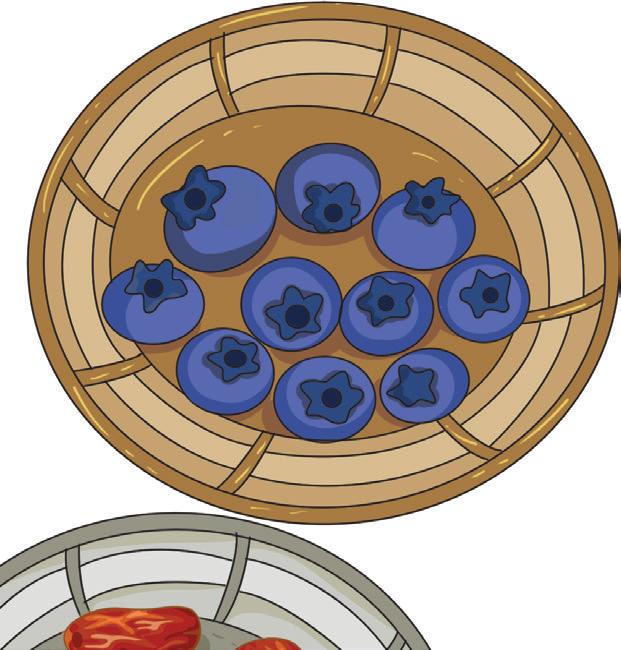



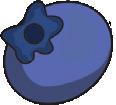









1 group of 10 and more make
1 group of 10 and more make

2 groups of 10 make

Objectives
• Early arithmetic skills • Counting by tens • Grouping skills
• Number recognition • Writing numbers



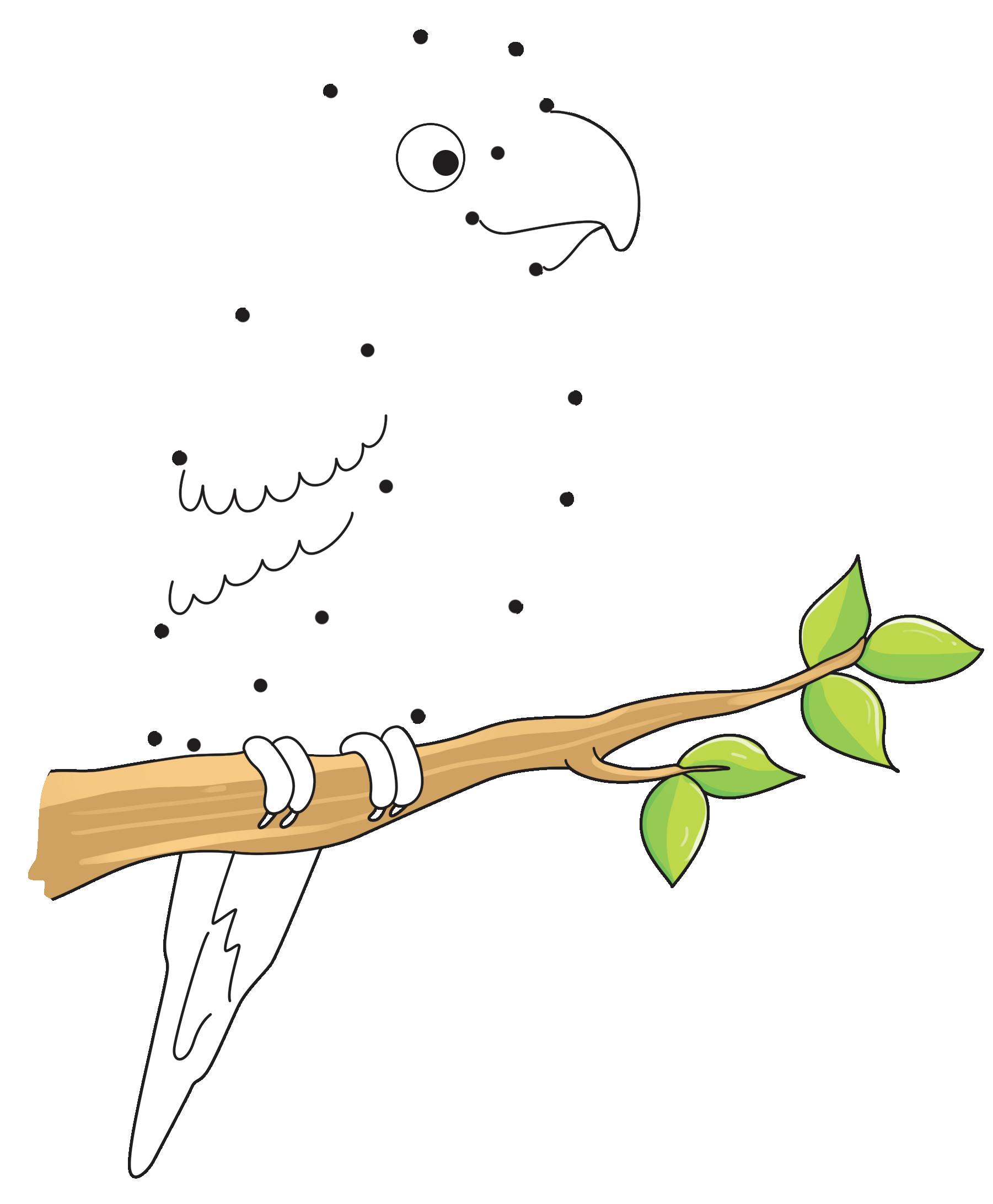

Write the numbers from 1 to 50 under T (Tens) and O (Ones). 1 4 9 T O T O T O T O T O 2 2 2 2 1 1 6 0 3 3 3 8 1 4 4 4 4 0 3 7

Objectives
• Number recognition • Understanding place value • Writing skills • Fine motor skills

Count the number of things and write the total.






























3 groups of 10 =
4 groups of 10 =
5 groups of 10 =

Objectives
• Early arithmetic skills
• Counting by tens • Grouping skills
• Number recognition • Writing numbers


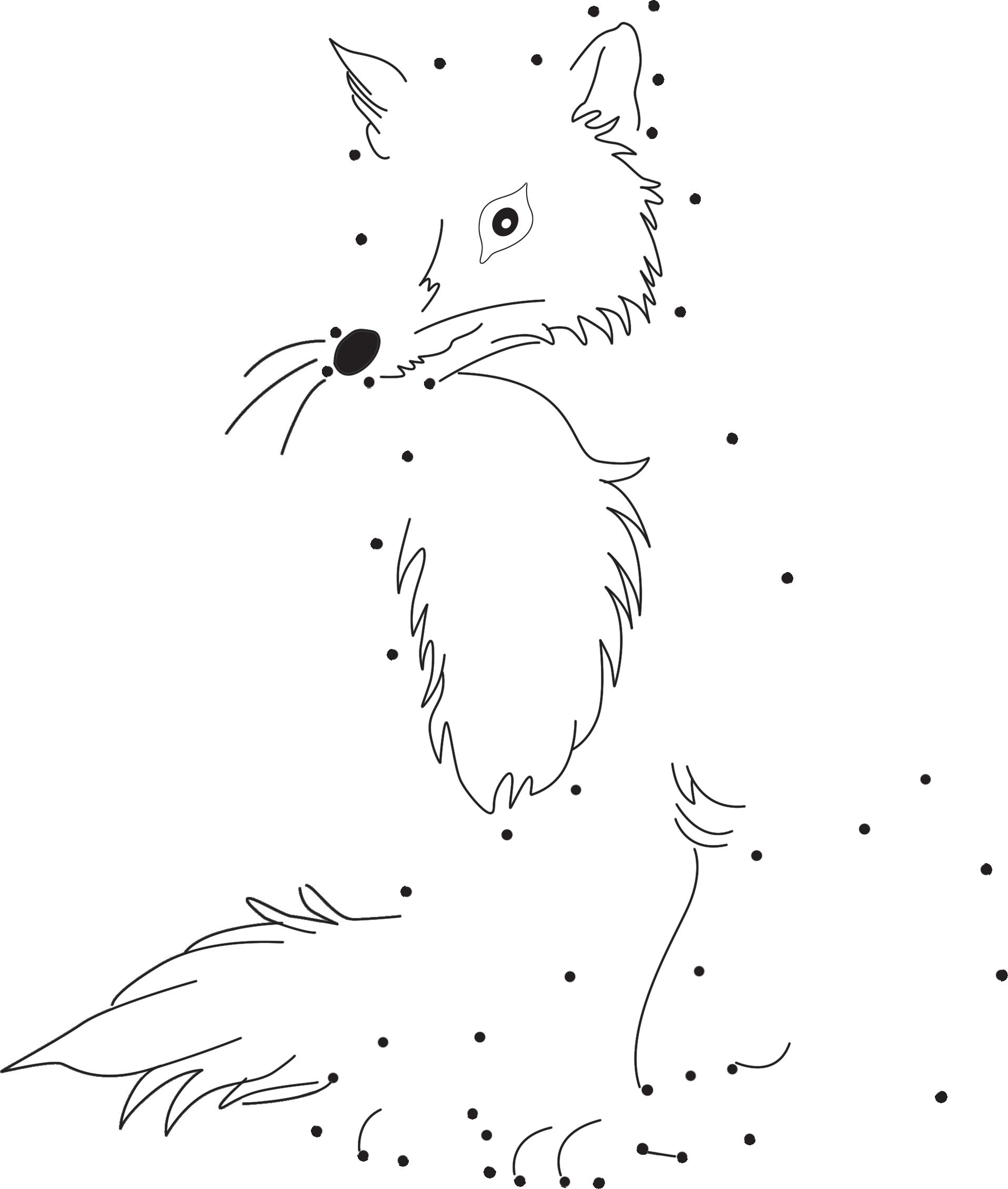


Write the numbers from 51 to 60 under T (Tens) and O (Ones).
T O 5 5 5 1 4 9
Count the number of things and write the total.










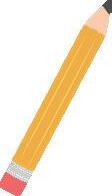









































































Objectives






























• Number recognition • Understanding place value • Writing skills • Fine motor skills

Write the numbers from 61 to 70 under T (Tens) and O (Ones).
T O 6 6 6 2 7 0

Count the number of things and write the total.
Objectives • Number recognition • Understanding place value • Writing skills • Fine motor skills

Write the numbers from 71 to 80 under T (Tens) and O (Ones).
T O 1 4 9 7 7 7
Count the number of things and write the total.




























































































































































Objectives • Number recognition • Understanding place value • Writing skills • Fine motor skills

Count the number of things and write the total.




























































6 groups of 10 =
7 groups of 10 =
8 groups of 10 =

Objectives
• Early arithmetic skills • Counting by tens • Grouping skills
• Number recognition • Writing numbers

Write the numbers from 81 to 90 under T (Tens) and O (Ones).
T O
Count the number of things and write the total.
2 8 6 8 0 9

Objectives • Number recognition • Understanding place value • Writing skills • Fine motor skills


Write the numbers from 91 to 100 under H (Hundreds), T (Tens), and O (Ones).
Count the number of things and write the total.




























































































Objectives




























































































• Number recognition • Understanding place value • Writing skills • Fine motor skills T O H 9 9 2 7 1 0 0









Count the number of things and write the total.


























































































8 groups of 10 and more =
9 groups of 10 =
10 groups of 10 =

Objectives
• Early arithmetic skills • Counting by tens • Grouping skills
• Number recognition • Writing numbers


Count and write the missing numbers from 50 to 100.

Objectives

Write the numbers from 51 to 100 under H (Hundreds), T (Tens), and O (Ones).
Objectives • Number recognition • Understanding place value • Writing skills • Fine motor skills T O H T O 1 4 9 T O 6 6 6 2 7 0 T O 7 7 3 8 T O 0 8 8 1 4 9 9 9 3 7 5 5 5




Objectives
Note for Teachers

Write the number names for the given numbers.



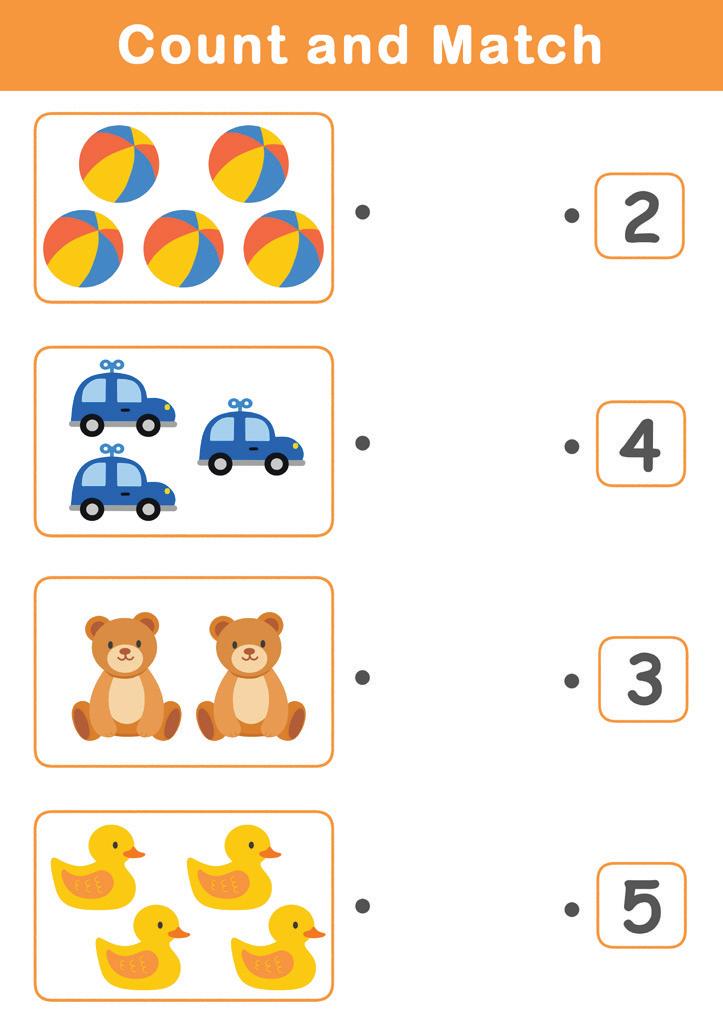

Objectives

• Counting and number recognition • Recognition of number names • Writing of number names 1 2 3 4 5 6 7 0 8 9 1 One Ten







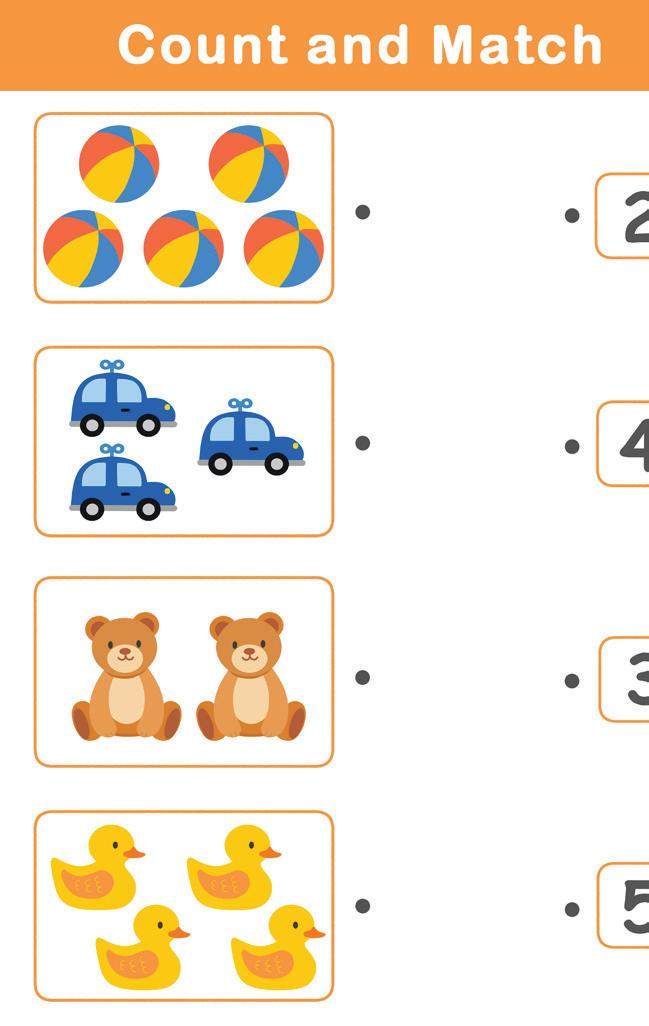
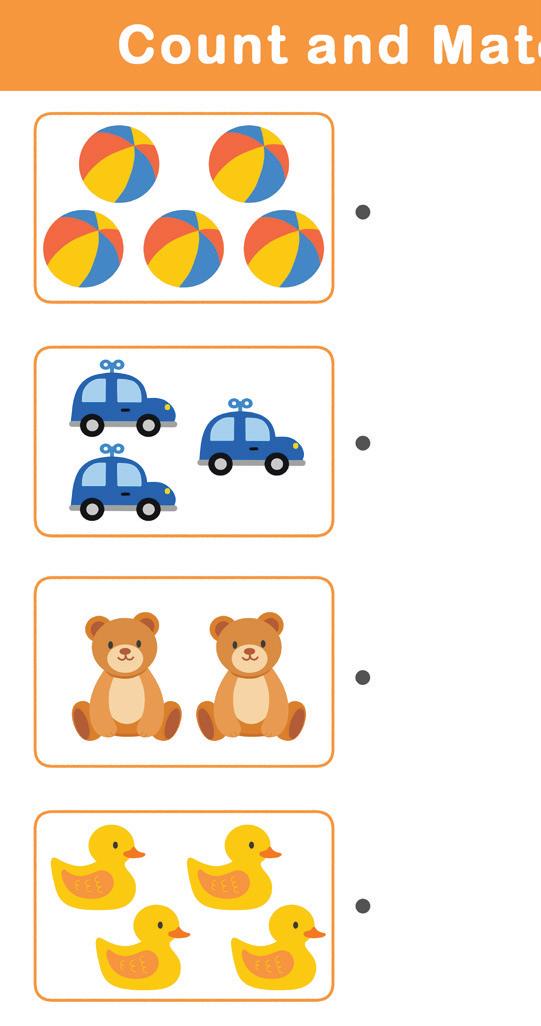


Write the numbers for the given number names.







THREE

















NINE TEN

Objectives
• Counting and number recognition
• Recognition of number names • Writing skills



Complete the number names. Match them with the correct numbers.
10 4 8 2 3 6 5 9 7 1

Objectives
• Cognitive skills S ___ V ___ N E ___ G ___ T F ___ V ___ O ___ E S ___ X N ___ ___ E F ___ ___ R T ___ O TH ___ ___ E TE ___
• Number recognition and matching
• Recognition of number names
• Writing skills


Look at the pictures in Column A. Circle the picture that comes just after it in Column B.






Column A Column B 7 29


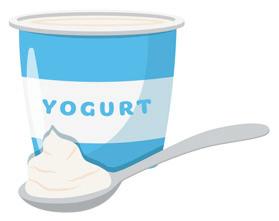
Count forward and write the number that comes just after the given number.

Objectives
• Sequential thinking • Counting and number recognition • Fine motor skills

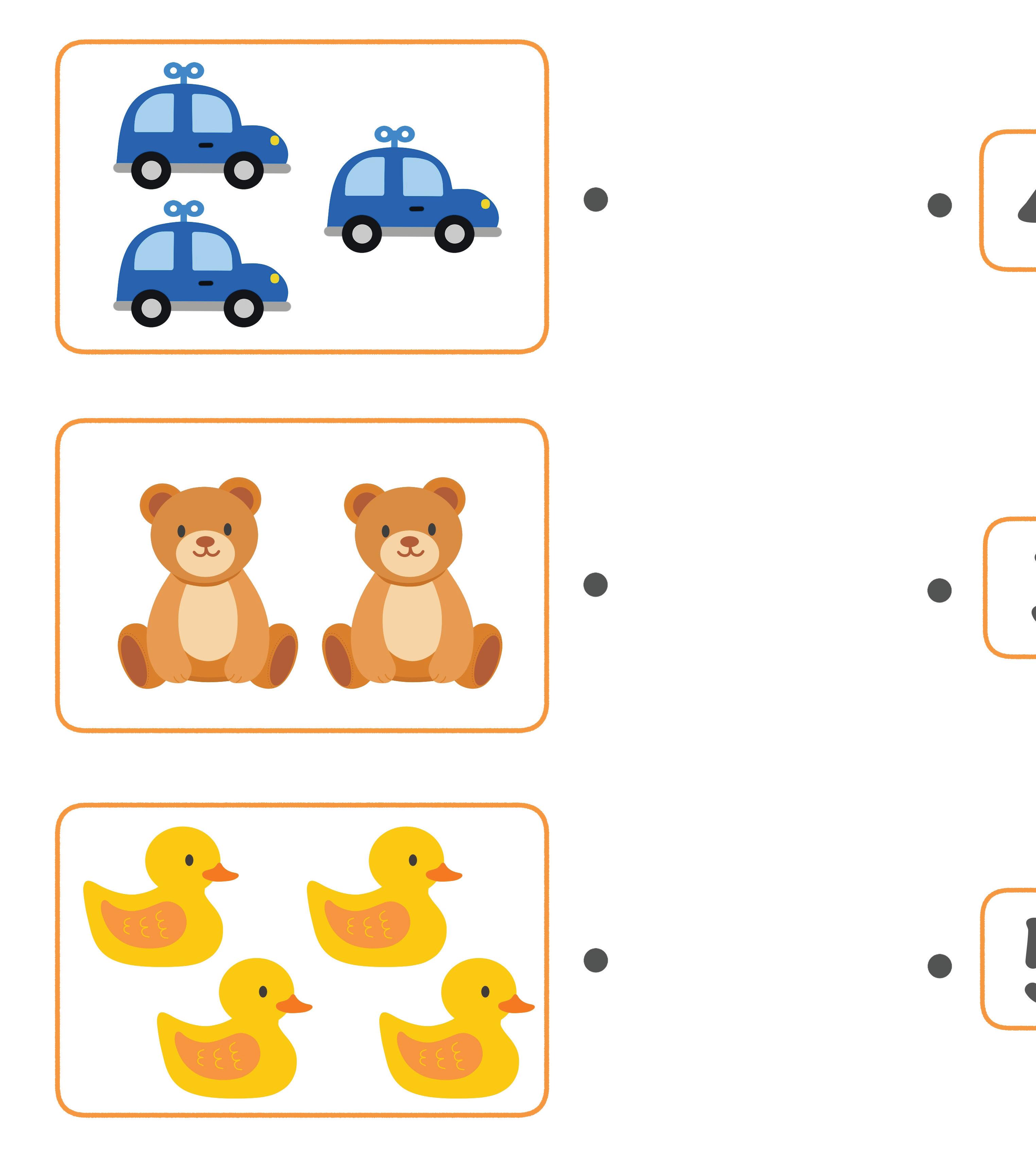
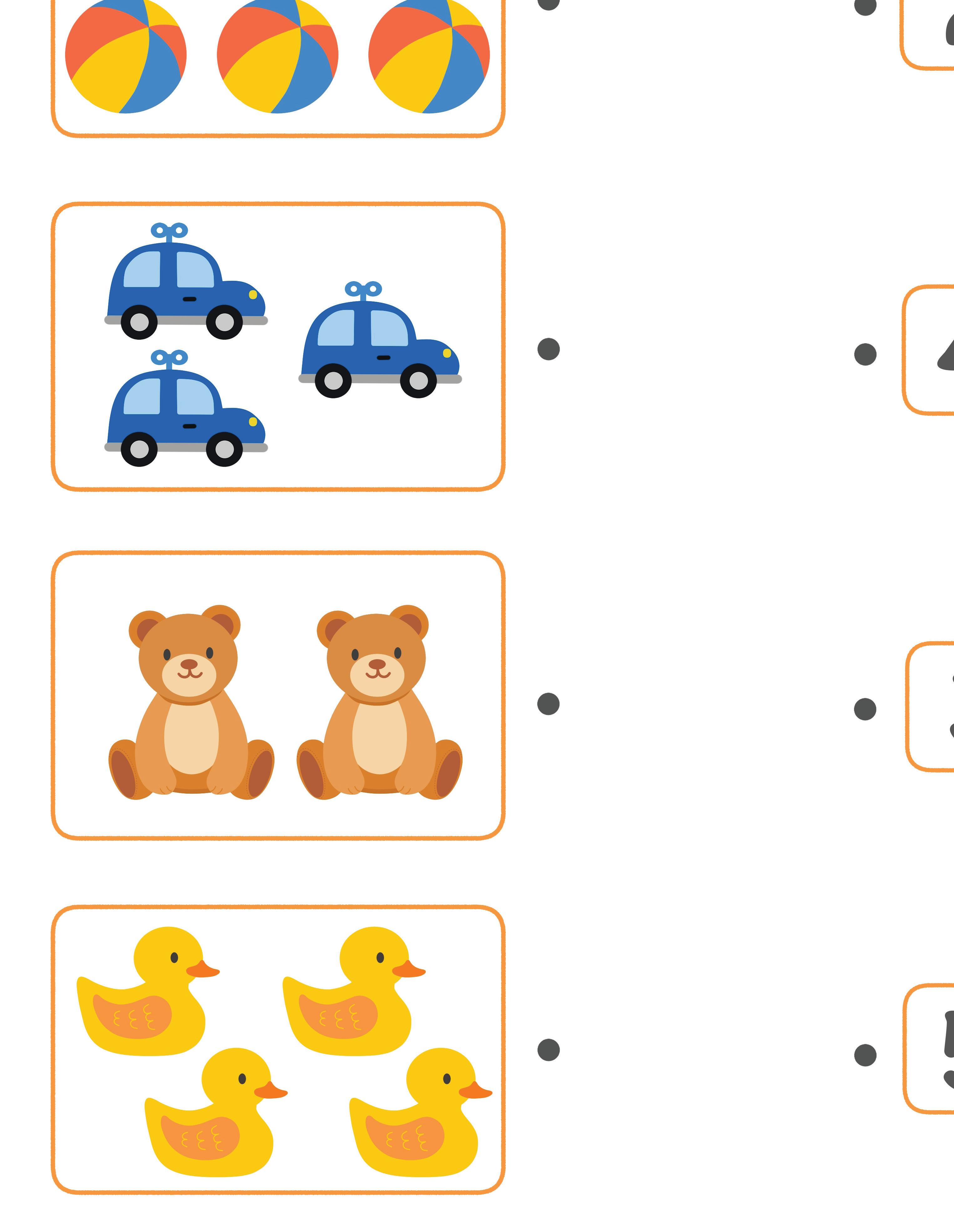
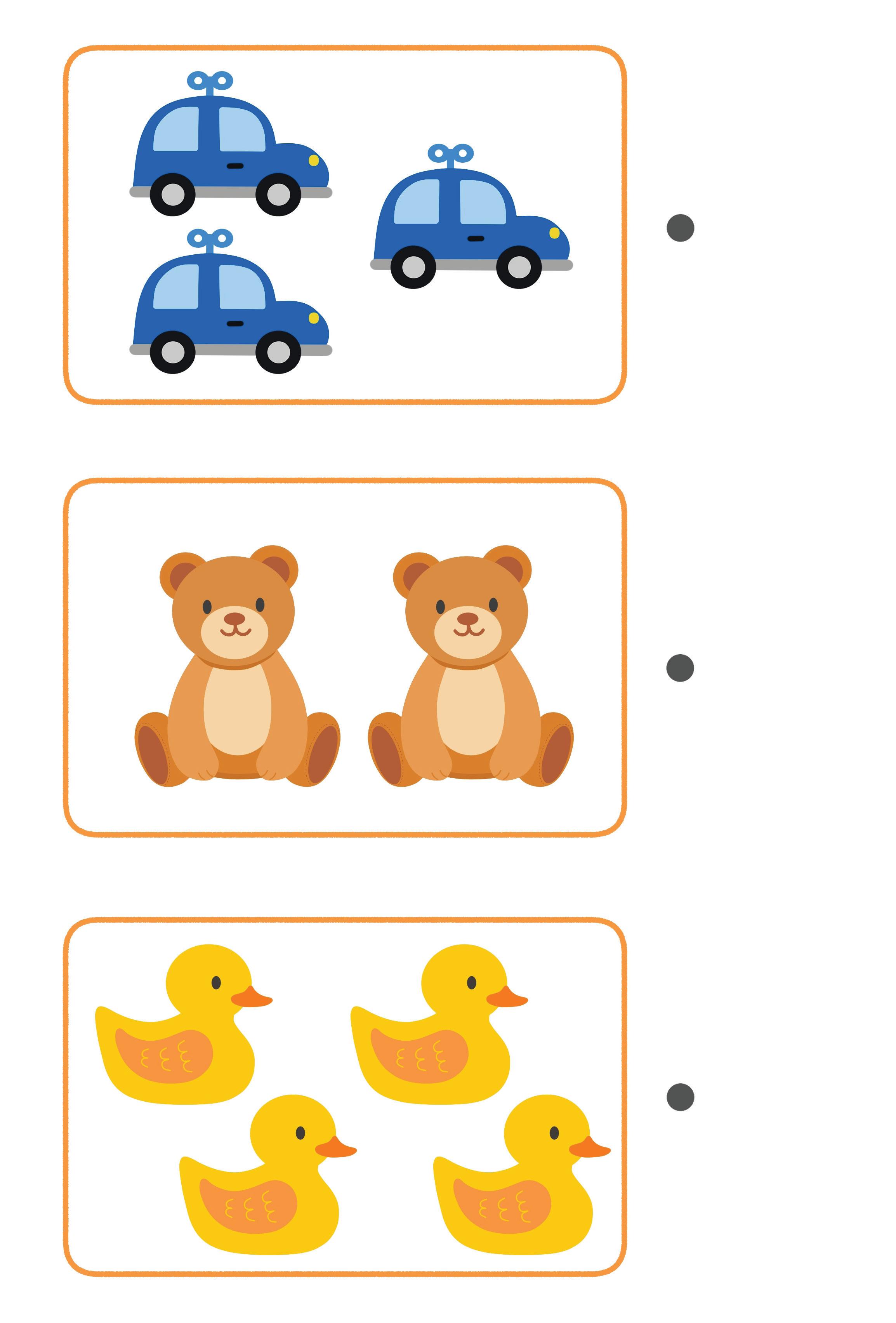

Circle the thing that comes between two things in each set.
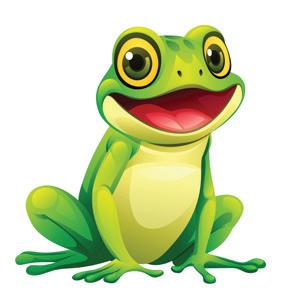


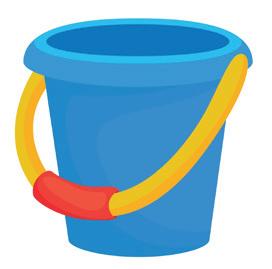

Write the number that comes between the given numbers.

Objectives
• Sequential thinking • Counting and number recognition • Fine motor skills

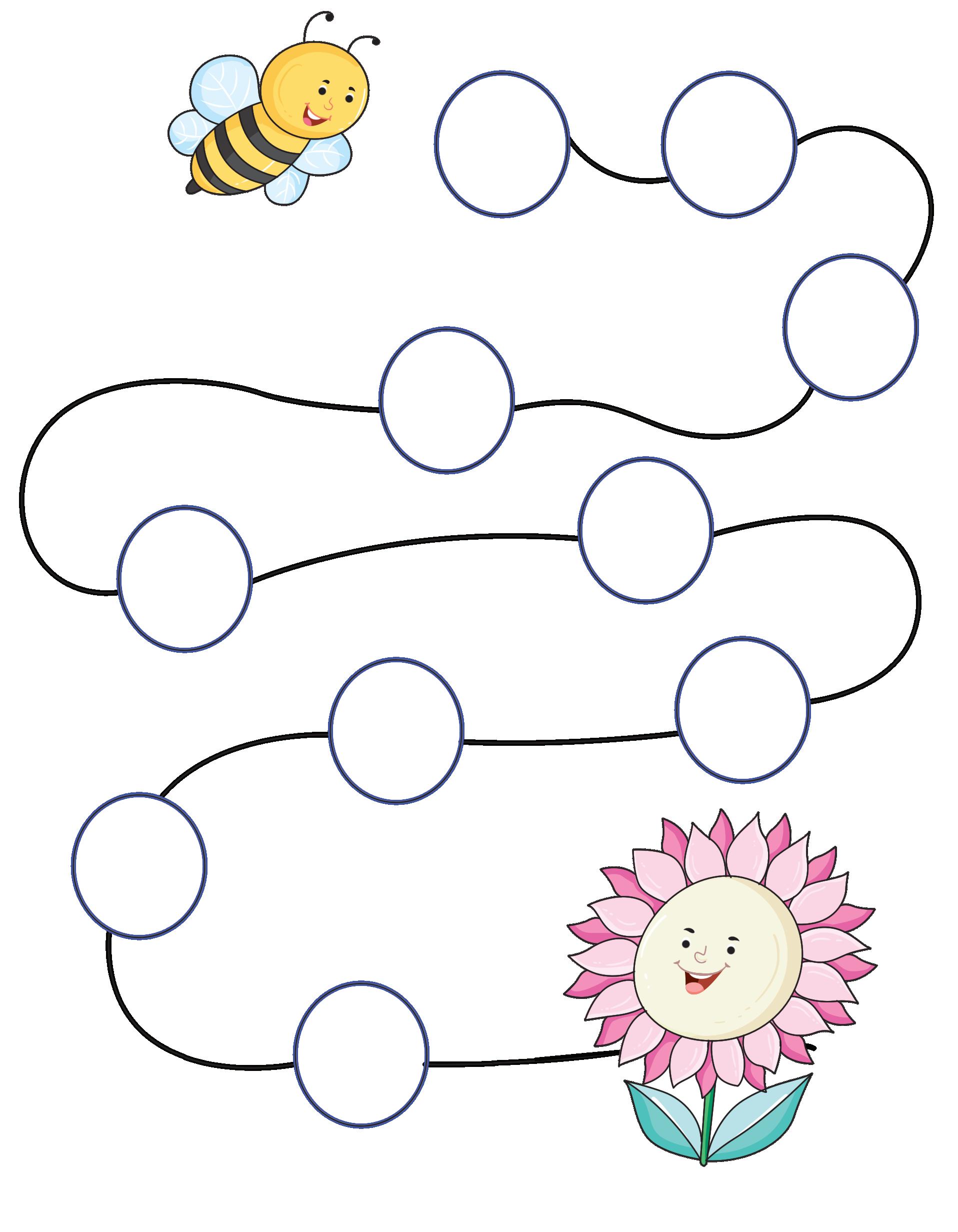
Take the bee to the flower. Count backward and fill in the

12
20 19
15

Use the correct sign in the box. Use > for greater than and < for less than.
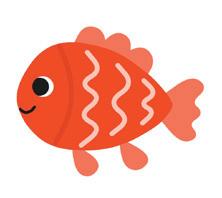




















Objectives
• Counting objects • Comparing quantities • Understanding the symbol of > / < • Critical thinking skills 4 7 8 5 6 5 3 9


Use the correct sign > or < in the box.


Objectives
• Comparing quantities
• Understanding the symbol of > / < • Critical thinking skills 2 8 6 7 9 3 7 9 1 6 9 5 5 3 3 1 8 6 4 1 5 5 6 7 7 4 2 1

Count and put the correct sign >, <, or = in the box.



























Objectives

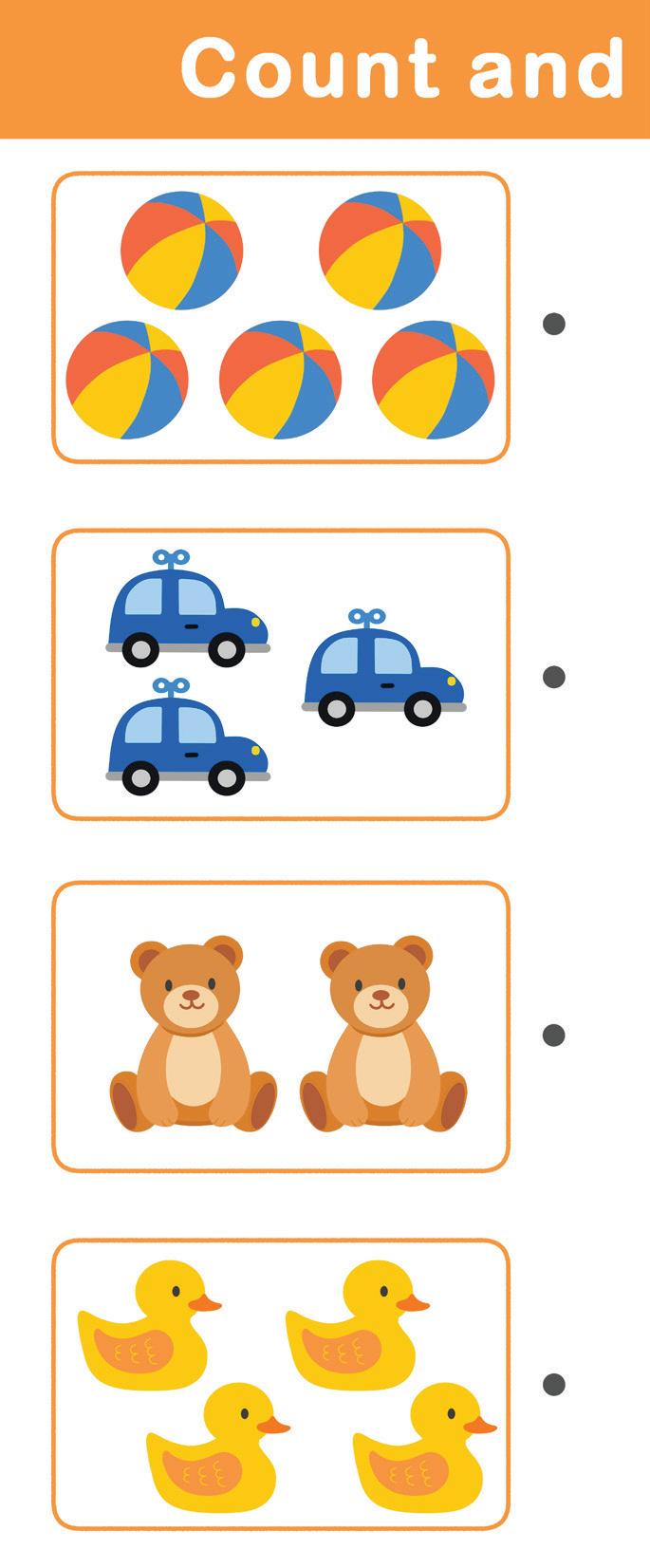


• Comparing quantities • Understanding the symbol of > / < / = • Critical thinking skills

Put the correct sign >, <, or = in the box.



Write the numbers in order from small to big in each set.







Objectives
Number recognition and sequencing
Comparative reasoning
Cognitive skills
Fine motor skills

Write the numbers in order from big to small in each set








Objectives
Number recognition and sequencing
Comparative reasoning
Cognitive skills
Fine motor skills

Look at the position of things. Circle the correct position word.
Where is the bee?

Where is the kitten?

Where is the frog?

Where is the boy?


Objectives
• Identifying position of things • Spatial awareness • Object recognition • Fine motor skills

Help the butterfly fly over the fence by tracing over the line.

Help the caterpillar crawl under the bench by tracing over the line.
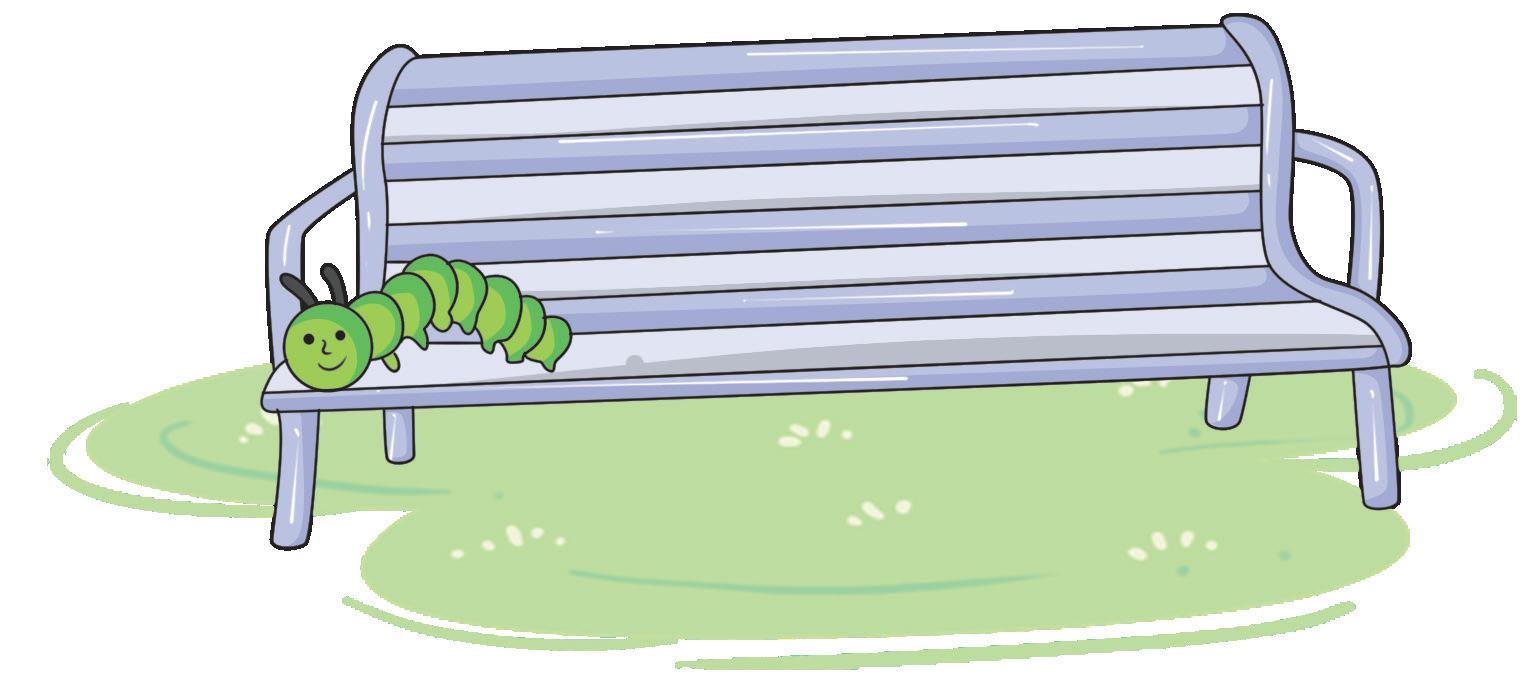

Objectives
• Identifying position of things • Spatial awareness • Fine motor skills


Look at the picture. Colour the thing that is behind.

Look at the picture. Colour the thing that is in front.


Objectives
• Identifying position of things • Spatial awareness • Fine motor skills

Match the things with their correct positions.
























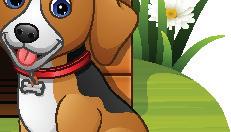









Objectives
• Identifying position of things • Spatial awareness • Fine motor skills

























Tick () the things that are open. Cross () out the things that are closed.


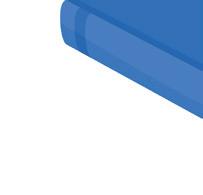
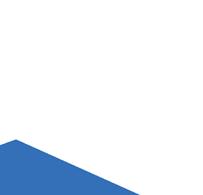
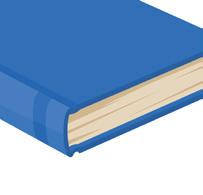




































Objectives
























































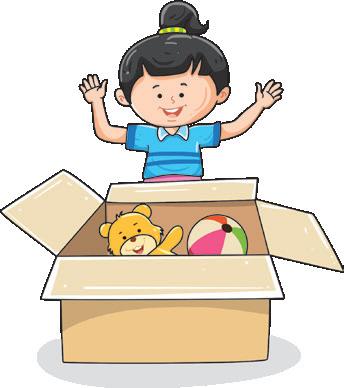
• Identifying position of things • Spatial awareness • Fine motor skills

Is it hot or cold? Write H for hot and C for cold.
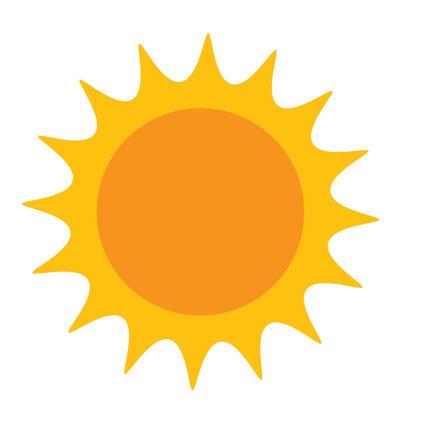
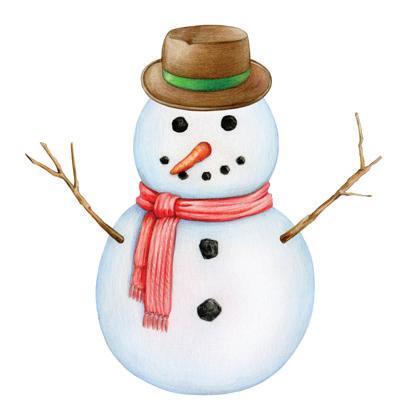
Draw your favourite hot or cold thing and colour it.

Objectives
• Critical thinking • Comparing temperature • Categorisation • Fine motor skills • Creativity


Circle the correct coin to pay for each thing.
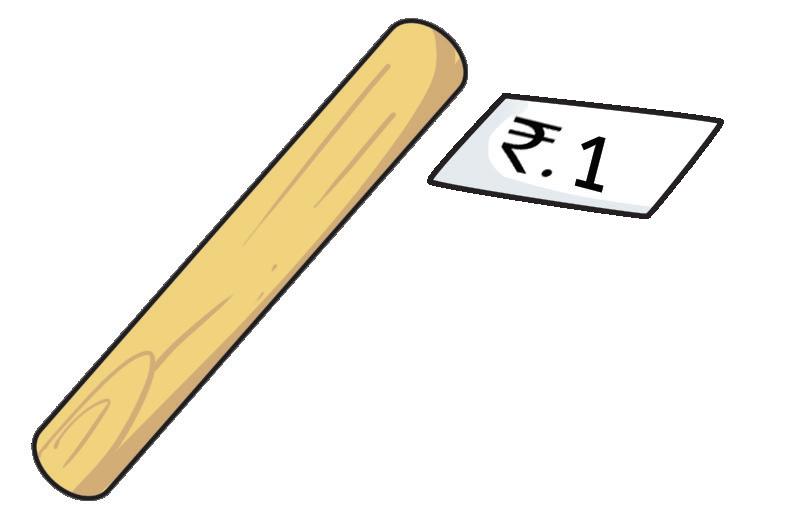
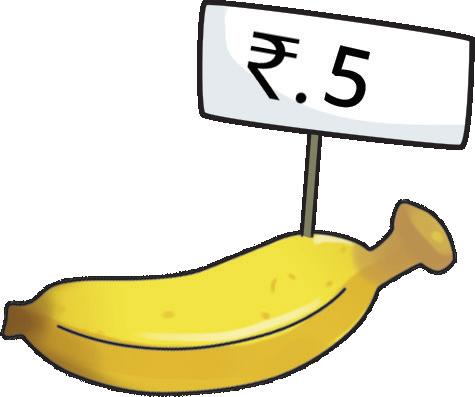
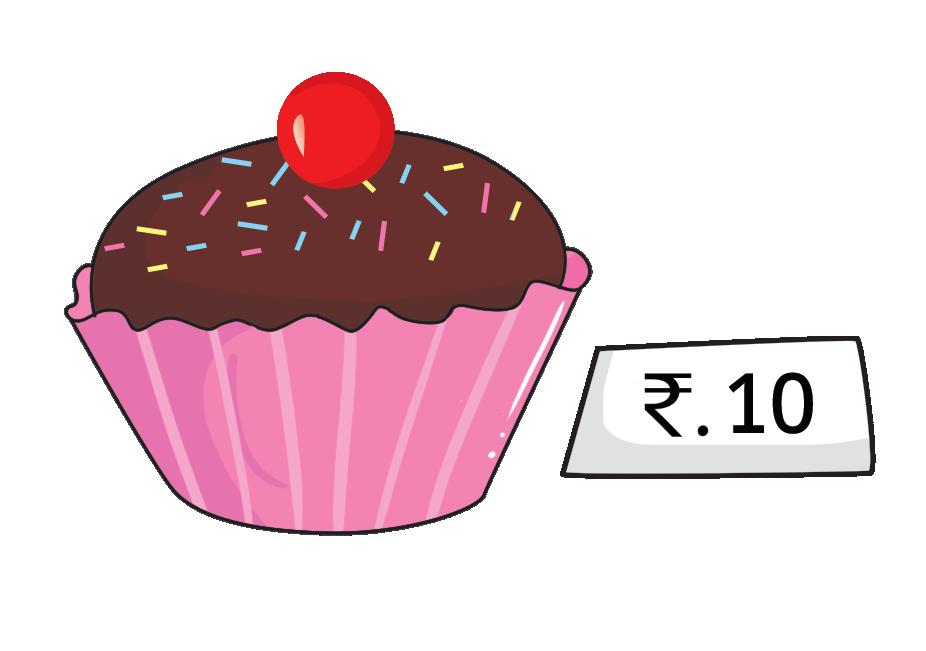



Objectives




















• Understanding currency values • Recognition of rupees and coins • Visual discrimination

Look at the price tags. Match the things with the correct amount.
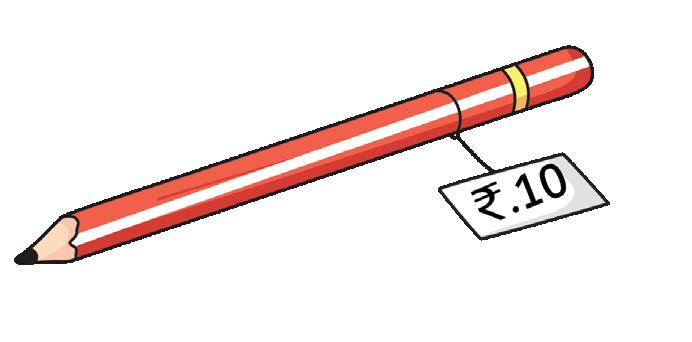






Objectives
• Understanding currency values
• Recognition of rupees • Visual discrimination
• Fine motor skills

Write the correct ordinal numbers for each thing

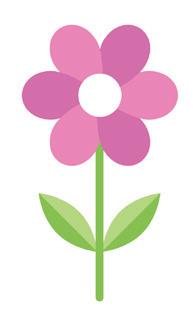
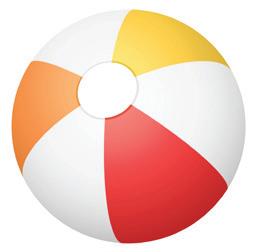
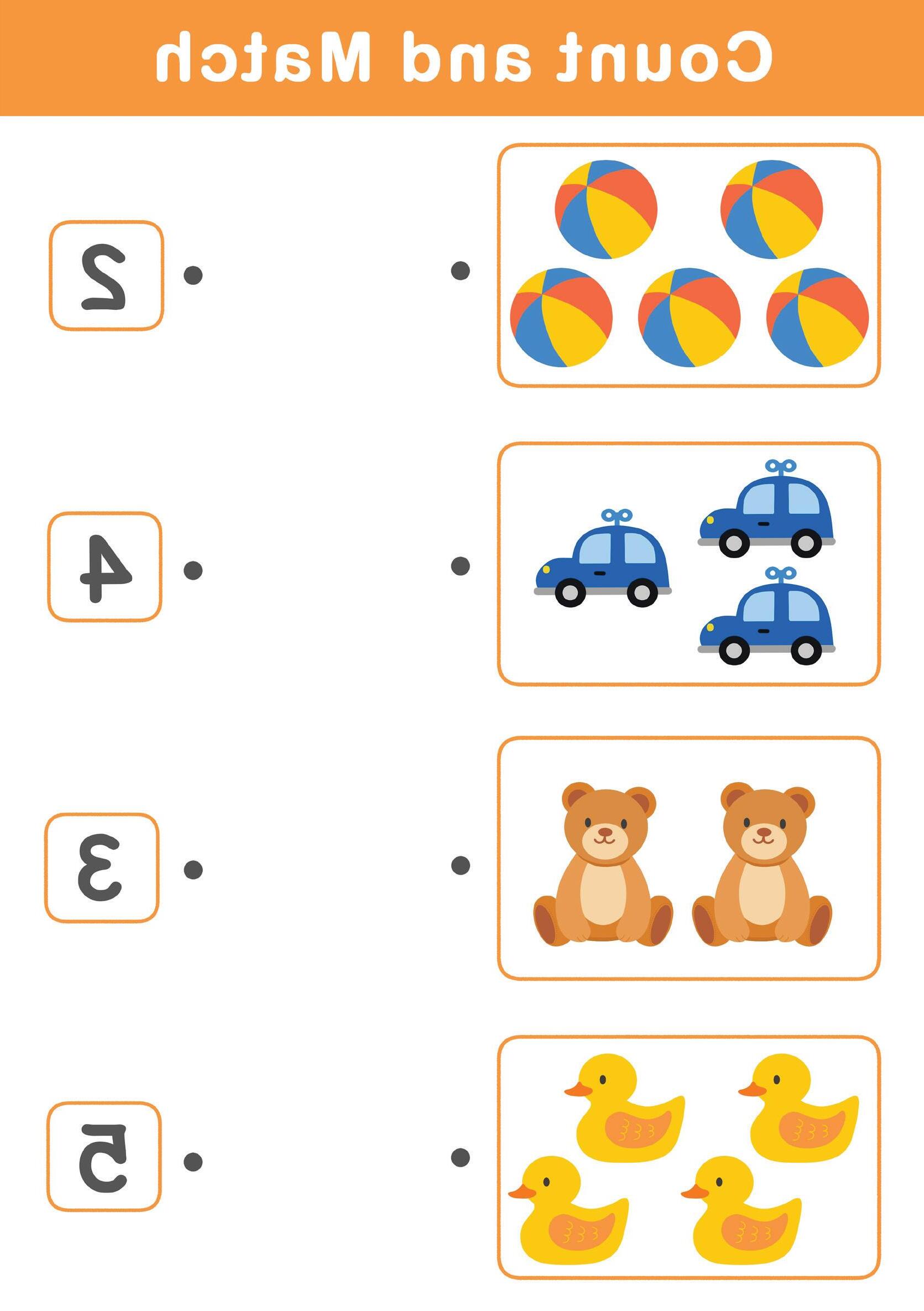


Objectives
• Understanding ordinal numbers
• Awareness of position • Number recognition • Cognitive skills

Write the ordinal number for each coloured fruit in a set.

2nd th st rd th

Objectives
• Recognition of ordinal numbers
• Awareness of position
• Writing skills • Visual discrimination


Count and add the things in each set.











Objectives



• Addition • Counting and number recognition • Basic arithmetic and writing skills

Vani has 4 pots in her garden. Her mother bought 2 more pots. How many pots does Vani have now? Write in the boxes.






There are 2 candles on the birthday cake. Draw 3 more candles on the cake. How many candles are there now?





Objectives • Concept of addition • Counting practice • Reading comprehension • Problem solving skills

Add the things to complete the number sentences.
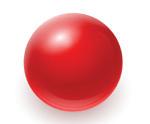














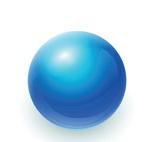



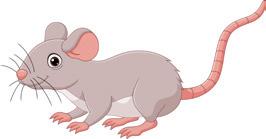



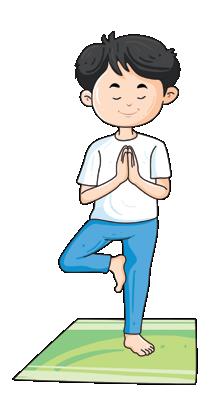

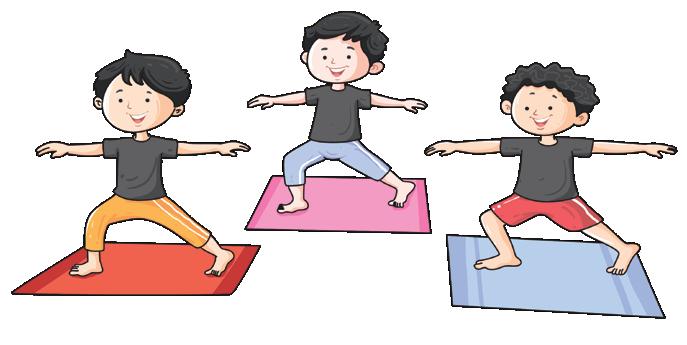











Objectives
• Concept of addition • Problem solving skills • Counting and number recognition

Fill in the missing number.
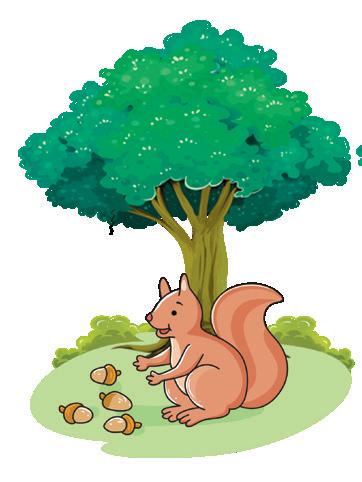

A squirrel has 4 nuts. She eats 3 nuts. How many are left?
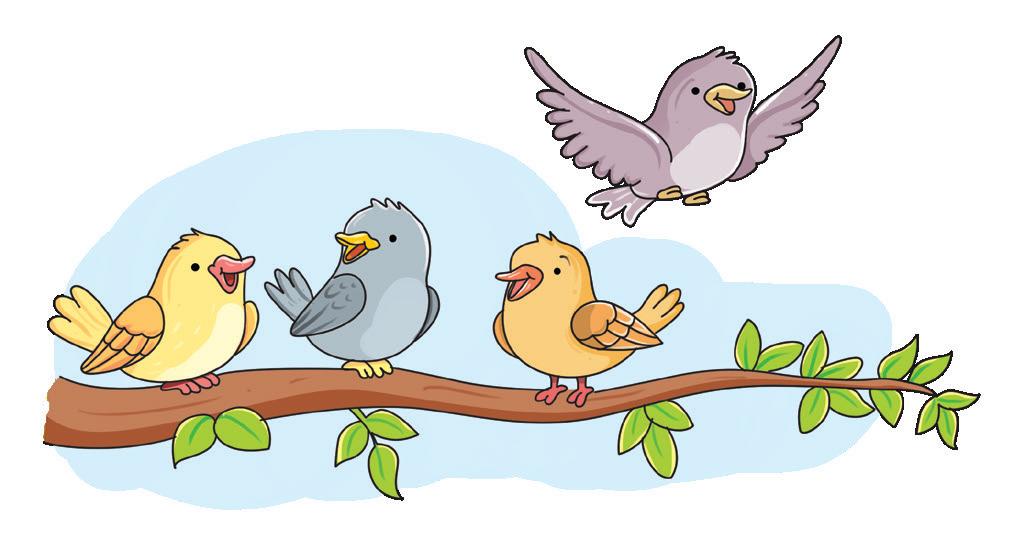
= = 4 4 3 1
Four birds are sitting on a branch. One bird flies away. How many are left?

Objectives
• Concept of subtraction
• Problem solving skills

• Counting and number recognition
• Critical thinking skills


6
A girl has 6 balloons.

8
A boy is making a pile of 8 blocks.

Objectives
• Concept of subtraction
• Problem solving skills





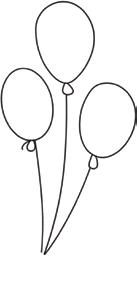


















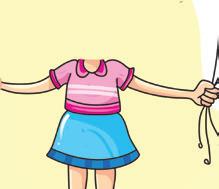

3




–= =
3 balloons flew away. How many are left?
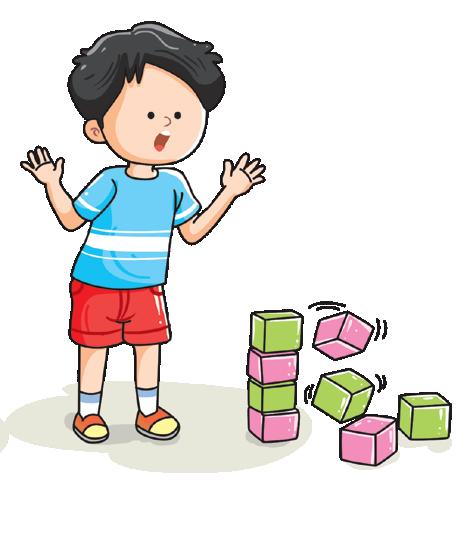
4
4 blocks fall down. How many are left standing?
• Counting and number recognition
• Critical thinking skills

Cross () out 2 fruits in each row. Write how many fruits are left.




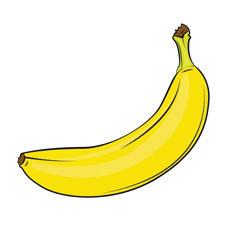




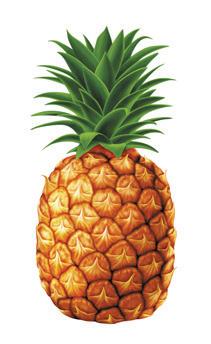






Objectives
• Concept of subtraction
• Visual discrimination

• Fine motor skills take away 2 = take away 2 = take away 2 = take away 2 = 1
• Counting and number recognition

Let us begin from number 2 and count in 2s.
Begin from number 2. Count in 2s and colour the numbers.
Skip count in 2s from 31 to 39.

Objectives
• Skip counting by 2 • Adding numbers • Fine motor skills 4 5 6 7 8 9 1 10 2 3 1 2 3 4 5

Let us circle the things in groups of 5.





Begin from number 1. Count in 5s and colour the numbers.

Objectives • Skip counting by 5 • Adding numbers • Fine motor skills


Complete the number names. Match them with the correct numbers.


Look at the clock. Write the correct time for each activity.
Time to bathe
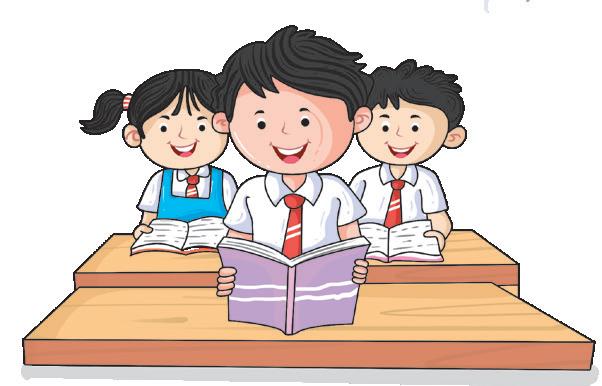
Time to study

Time to play

Time to sleep

Objectives
• Time recognition • Sequencing skills


• Daily routine activities • Writing practice o' clock o' clock o' clock o' clock


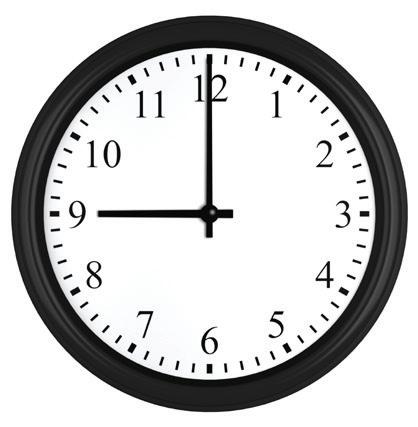

Tick () the day of the week that comes next.




Objectives
• Awareness of days of the week • Sequencing skills • Writing practice

Number the months of the year in the correct order.

January


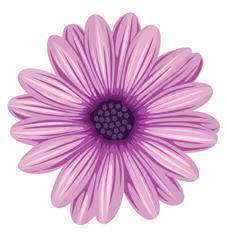
August
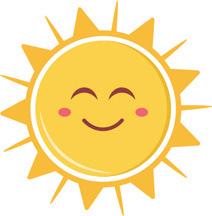
June


April
February

November
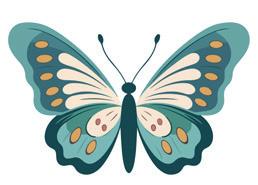

Objectives
March

• Awareness of months of the year

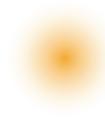
• Sequencing skills









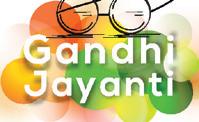






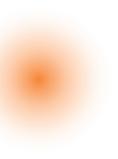
October






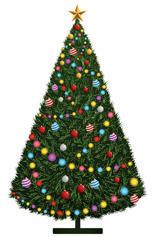
December


September
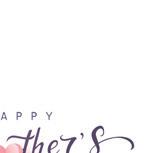


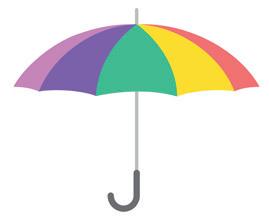
May
July

DAWN is a comprehensive, NCF 2022-based Early Childhood Education program that lays a solid foundation for lifelong well-being and holistic growth, encompassing physical, cognitive, and socio-emotional development.
This Numeracy Skillbook is specifically designed to practise essential maths skills, including pre-number and number concepts, one-to-one correspondence, sorting, comparing, classification, logical sequencing, and pattern recognition.
Additional Resources
• Flash Cards
• Sticker Sheets
• Suggested Activities List, for teacher and parents
• Teacher's Manual
• Digital Resouces
• Assessment Sheets and Holistic Progress Card
• Play-based learning activities, which promote holistic development of the child in all ECE domains
• School readiness, which is assured in the curriculum and learning design
• All-round development, in areas of physical, cognitive, cultural and socio-emotional domains
• Teacher assets, like assessment tools and lesson plans to help maximise program quality and outcomes
Uolo partners with K-12 schools to provide technology-enabled learning programs. We believe that pedagogy and technology must come together to deliver scalable learning experiences that generate measurable outcomes. Uolo is trusted by over 15,000+ schools across India, Southeast Asia and the Middle East.
Not to be sold separately
ISBN 978-81-980546-9-2
